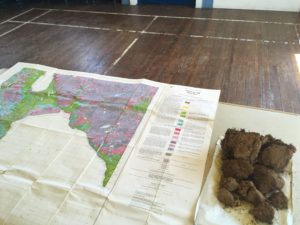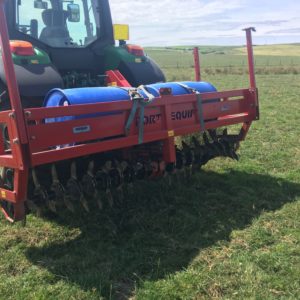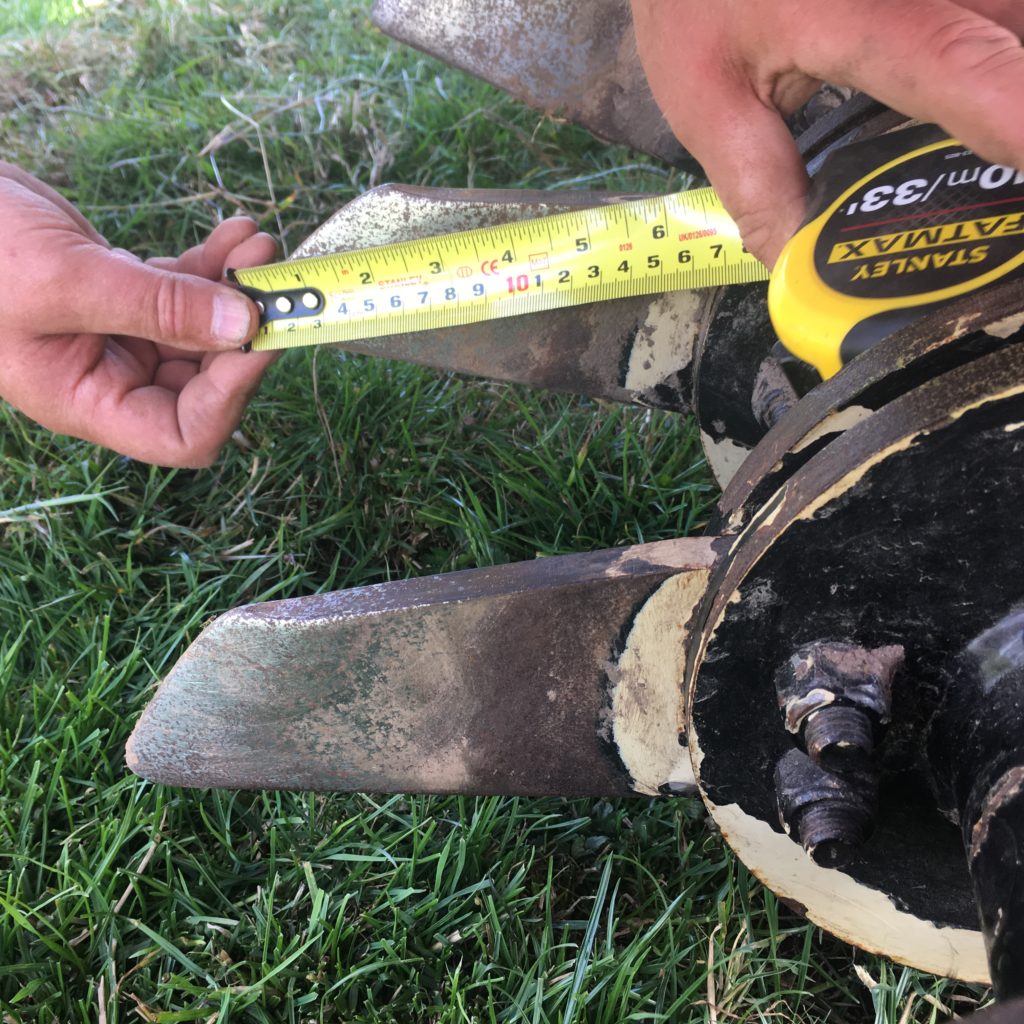Stranraer Soil & Nutrient Network: 1st meeting event summary
19 July 2018The first meeting of the Stranraer Nutrient Network was held on Thursday 19th July at Leswalt.
The morning session was held in Leswalt Village Hall where the topics of soil sampling, liming, phos phate and an introduction to soil structure were discussed. Farmers were able to view local soil maps to see soil types on their farm and samples of various lime samples were passed round for discussion. Scotland’s Environment is a web page where you can view soils maps of Scotland for free. A simple search will show what soil type your farm might have.
phate and an introduction to soil structure were discussed. Farmers were able to view local soil maps to see soil types on their farm and samples of various lime samples were passed round for discussion. Scotland’s Environment is a web page where you can view soils maps of Scotland for free. A simple search will show what soil type your farm might have.
An introduction to nutrient budgeting was made discussing phosphate applications and highlighting the importance of soil sampling.
The afternoon session was held at Balwherrie Farm. This was a practical session looking at soil structure and there were working demonstrations from two sward lifter machines and an aerator and discussion made around each machine and the effects they had on soil. However,
the importance of digging a hole to examine soil structure before you decide upon using a piece of machinery was stressed. You need to know if there is a problem and why before you can decide how to alleviate it and different machines will address different problems. Using the wrong one may even cause more problems.
You can read more about how to assess soils structure using a VESS (Visual Examination of Soil Structure) from the Valuing Your Soils booklet. There are VESS charts at the end of the booklet and explain the process in detail.
Read the presentation slides used during this meeting here. More photos from the event are available on our Facebook page.
Key points from the event
- Soil sample – this will enable the best use of organic nutrients and may well save your money!
- Dig a hole to assess your soil type and structure.
Use the links below to download leaflets available to take home from this event and other related information.
- Valuing Your Soils – Practical Guidance for Scottish Farmers
- This brochure includes useful information about Scotland's agricultural soils and practical advice outlining the upfront financial savings and business benefits of better soil management and the efficient use of resources. Action and problem-specific 'field-sheets' are designed for busy farmers with limited time for reading.
- Topics: Climate Change, Soils, Water Management and Crops and Soils
- Visual Evaluation of Soil Structure (VESS) Score Chart
- This is a downloadable copy of the Visual Evaluation of Soil Structure (VESS) score chart for use in-field.
- Topics: Soils
- 1st Stranraer Soil & Nutrient Network meeting presentation slides
- These are the presentation slides used during the first meeting of the Stranraer Soil & Nutrient Network group, held during July 2018 in Leswalt
- Topics: Soils
- Practical Guide: Soil sampling I – How to take a soil sample
- This practical guide details what is required to take a soil sample for analysis that is representative of the area sampled.
- Topics: Soils, Climate Change and Water Management
- Practical Guide: Soil sampling II – Benefits to your business
- This practical guide details how soil sampling can benefit businesses by increasing productivity and create efficiencies on fertiliser inputs through better nutrient planning.
- Topics: Soils, Climate Change and Water Management
- Practical Guide: Nutrient budgeting I – The Benefits to your Business
- This practical guide looks at the benefits of creating and using a nutrient budget for your farm business.
- Topics: Climate Change
- Practical Guide: Nutrient Budgeting II – Getting Started
- This practical guide looks at what factors you need to consider when making a nutrient budget for your farm, fertiliser recommendations and how to get the most out of your nutrient budget.
- Topics: Climate Change
- Info on Lime, Phosphate etc
- Topics: Soils
- Practical Guide: Managing Soil Phosphorus
- This Practical Guide will help you manage the phosphorus in your soils. It will help you understand the risk of phosphorus pollution and how you can reduce bagged fertiliser costs in grassland by incorporating nitrogen fixing clover into your sward.
- Topics: Soils, Climate Change and Water Management
- Technical Note (TN668): Managing Soil Phosphorus
- Efficient soil P management is challenging due to the varying ability of soils to mediate and regulate plant available forms of P. Farmers and land managers in Scotland are now able to access farm level information about their soils making it possible to provide more accurate P management advice.
- Topics: Crops and Soils
- Farming For A Better Climate: Practical Guide – Alleviating Soil Compaction
- This Practical Guide gives some ideas on how to alleviate soil compaction.
- Topics: Soils
- Farming For A Better Climate: Practical Guide – Improving Soil Quality
- This Practical Guide concentrates on how we can improve soil quality to help us to adapt to climate change.
- Topics: Soils
- Farming For A Better Climate: Practical Guide – Soil Management
- Topics: Soils
- Healthy Grassland Soils – guide to soil assessment
- This is publication from Newcastle University, ADAS, SRUC & AHDB can be used to help you assess the health of your grassland soils
- Topics: Soils, Climate Change, Water Management and Crops and Soils
- Interpretation of Soil Analysis Results
- QMS Better Soil Grassland Management for Scottish Beef & Lamb Producers
- QMS Better Soil Grassland Management for Scottish Beef & Lamb Producers booklet
- Topics: Crofts & Small Farms, Climate Change, New Entrants, Livestock and Rural Business
- Practical Guide: Tyre Selection & Management
- This practical guide explains how to reduce soil damage, improve fuel usage and reduce overall green house gas emissions by selecting the correct tyre size, type and pressure.
- Topics: Climate Change
- Farming For A Better Climate: Practical Guide – Field Drainage
- Topics: Soils and Water Management
- Technical Note (TN656): Soil Information, Texture & Liming Recommendations
- • Web based access to information on your soils on your farm is described. • Soil texture classes of mineral soils are described and identified by hand texturing. • Liming recommendations for different soils and managements are tabulated.
- Topics: Soils
Sign up to the FAS newsletter
Receive updates on news, events and publications from Scotland’s Farm Advisory Service


